
Marketing Automation For Dummies
Published by: John Wiley & Sons, Inc., 111 River Street, Hoboken, NJ 07030-5774, www.wiley.com
Copyright 2014 by John Wiley & Sons, Inc., Hoboken, New Jersey
Media and software compilation copyright 2014 by John Wiley & Sons, Inc. All rights reserved.
Published simultaneously in Canada
No part of this publication may be reproduced, stored in a retrieval system or transmitted in any form or by any means, electronic, mechanical, photocopying, recording, scanning or otherwise, except as permitted under Sections 107 or 108 of the 1976 United States Copyright Act, without the prior written permission of the Publisher. Requests to the Publisher for permission should be addressed to the Permissions Department, John Wiley & Sons, Inc., 111 River Street, Hoboken, NJ 07030, (201) 748-6011, fax (201) 748-6008, or online at http://www.wiley.com/go/permissions .
Trademarks: Wiley, For Dummies, the Dummies Man logo, Dummies.com, Making Everything Easier, and related trade dress are trademarks or registered trademarks of John Wiley & Sons, Inc. and may not be used without written permission. All other trademarks are the property of their respective owners. John Wiley & Sons, Inc. is not associated with any product or vendor mentioned in this book.
LIMIT OF LIABILITY/DISCLAIMER OF WARRANTY : THE PUBLISHER AND THE AUTHOR MAKE NO REPRESENTATIONS OR WARRANTIES WITH RESPECT TO THE ACCURACY OR COMPLETENESS OF THE CONTENTS OF THIS WORK AND SPECIFICALLY DISCLAIM ALL WARRANTIES, INCLUDING WITHOUT LIMITATION WARRANTIES OF FITNESS FOR A PARTICULAR PURPOSE. NO WARRANTY MAY BE CREATED OR EXTENDED BY SALES OR PROMOTIONAL MATERIALS. THE ADVICE AND STRATEGIES CONTAINED HEREIN MAY NOT BE SUITABLE FOR EVERY SITUATION. THIS WORK IS SOLD WITH THE UNDERSTANDING THAT THE PUBLISHER IS NOT ENGAGED IN RENDERING LEGAL, ACCOUNTING, OR OTHER PROFESSIONAL SERVICES. IF PROFESSIONAL ASSISTANCE IS REQUIRED, THE SERVICES OF A COMPETENT PROFESSIONAL PERSON SHOULD BE SOUGHT. NEITHER THE PUBLISHER NOR THE AUTHOR SHALL BE LIABLE FOR DAMAGES ARISING HEREFROM. THE FACT THAT AN ORGANIZATION OR WEBSITE IS REFERRED TO IN THIS WORK AS A CITATION AND/OR A POTENTIAL SOURCE OF FURTHER INFORMATION DOES NOT MEAN THAT THE AUTHOR OR THE PUBLISHER ENDORSES THE INFORMATION THE ORGANIZATION OR WEBSITE MAY PROVIDE OR RECOMMENDATIONS IT MAY MAKE. FURTHER, READERS SHOULD BE AWARE THAT INTERNET WEBSITES LISTED IN THIS WORK MAY HAVE CHANGED OR DISAPPEARED BETWEEN WHEN THIS WORK WAS WRITTEN AND WHEN IT IS READ.
For general information on our other products and services, please contact our Customer Care Department within the U.S. at 877-762-2974, outside the U.S. at 317-572-3993, or fax 317-572-4002. For technical support, please visit www.wiley.com/techsupport .
Wiley publishes in a variety of print and electronic formats and by print-on-demand. Some material included with standard print versions of this book may not be included in e-books or in print-on-demand. If this book refers to media such as a CD or DVD that is not included in the version you purchased, you may download this material at http://booksupport.wiley.com . For more information about Wiley products, visit www.wiley.com .
Library of Congress Control Number is available from the publisher.
ISBN: 978-1-118-77222-5
ISBN 978-1-118-77222-5 (pbk); ISBN 978-1-118-77227-0 (ebk); ISBN 978-1-118-77230-0 (ebk)
Manufactured in the United States of America
10 9 8 7 6 5 4 3 2 1
Chapter 1
Introducing the Concepts of Marketing Automation
In This Chapter
 Defining marketing automation
Defining marketing automation
 Defining the modern buyer
Defining the modern buyer
 Knowing why companies implement marketing automation
Knowing why companies implement marketing automation
 Starting the conversation about marketing automation
Starting the conversation about marketing automation
Marketing automation is a buzzword in the marketing world. This chapter explains what it means and why marketing automation has made such a big difference in so many companies.
I show you what defines marketing automation and why its such a big deal. I list the major reasons that companies are implementing marketing automation solutions and show you how to start conversations about it at your company. I also dig into the changes in the modern buyer that have made marketing automation so popular.
Defining Marketing Automation
The term marketing automation got its start in the mid to late 1990s when a few people were combing their databases with automated code to make it easier to segment their databases into more granular segments based on more data. Since then, it has turned into a massive industry and has been called the fastest-growing software segment in the CRM space.
In short, marketing automation refers to the process of using a single platform for tracking leads, automating personal marketing activities, and being able to produce full closed-loop reports on the effectiveness of all marketing activities.
There are also many other ways to refer to the processes that marketing automation encompasses. Each company that sells marketing automation software calls it something slightly different, and even the analysts call it something different. Heres a list of terms you may hear in place of marketing automation:
- Demand generation
- Lead performance management
- Revenue performance management
- Automated lead management
- CRM lead management
Marketing automation (or whatever name you call it) really consists of three parts:
- The first is lead tracking, which consists of tracking a lead across all marketing channels.
- The second is automated execution, which enables you to have automated processes take place either as marketing campaigns or as internal changes based on these tracked actions.
- Finally, the third part allows for closed-loop reporting for proving the value of your marketing efforts down to every dollar those efforts bring in.
When thinking of marketing automation, many people may be confused, wondering whether its a technology or a way of marketing. Its actually both. Marketing automation is just as much a new way of marketing as it is a new tool that most companies have never used before. There are also many levels of marketing automation. Throughout this book, I cover all levels of marketing automation and show you how to implement the new technology while thinking about marketing in a new way.
Full marketing automation vs. piecemeal marketing automation
Marketing automation has many levels, an idea that you need to grasp before you dig deeply into this book. Currently, many options are available to help you automate marketing activities. Depending on your goals, you may just need a single tool to add to your existing toolbox, or you may need to replace your entire toolbox with a full marketing automation platform.
For example, say that youre using a form on a website and you can now easily have form submissions dropped right into your CRM without your having to lift a finger. This is an example of a single automation. A single tool can do this for you if this is all you require. I call a single tool working to do one action piecemeal marketing automation. But if you need those form submissions to score your prospects so that you can determine who is the most sales ready, you need a full marketing automation platform. Removing tasks is considered a level of automation, but it is a single-point solution and doesnt meet all three of the criteria I mention in this chapter to qualify as full marketing automation.

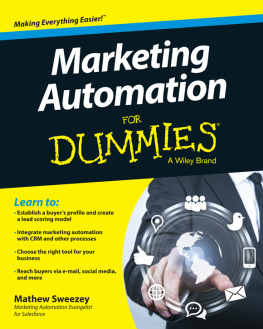

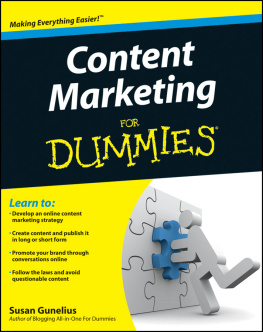
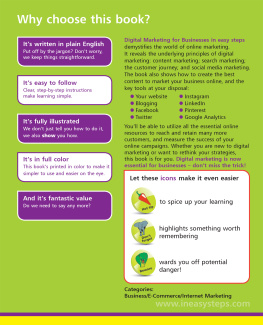


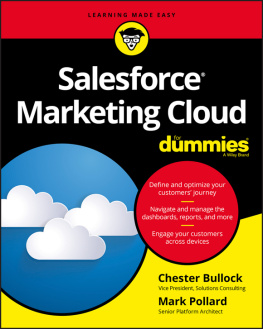
![Heather Fitzpatrick [Heather Fitzpatrick] - Marketing Management For Non-Marketing Managers](/uploads/posts/book/124049/thumbs/heather-fitzpatrick-heather-fitzpatrick.jpg)
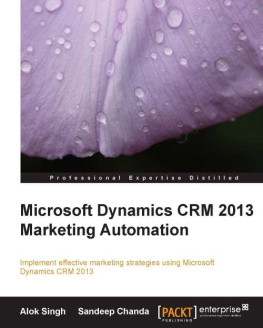
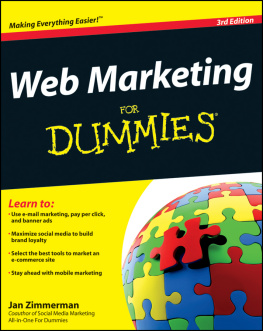
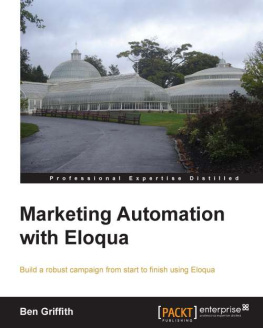

 Defining marketing automation
Defining marketing automation